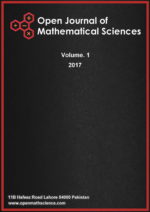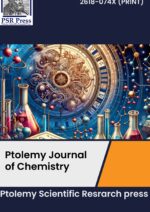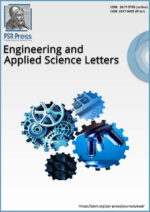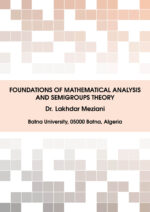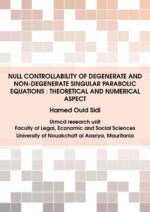Ptolemy Scientific Research Press (PSR Press)is a highly regarded publisher of scientific literature dedicated to bringing the latest research and findings to a broader audience. With a focus on cutting-edge research and technology, Ptolemy Scientific Research Press offers a range of publications catering to professionals, researchers, and student’s needs. Whether looking for information on the latest breakthroughs in physics, biology, engineering, or computer science, you can trust Ptolemy Scientific Research Press to deliver insightful, accurate, and engaging content. With its commitment to quality, accessibility, and innovation, Ptolemy Scientific Research Press is an essential resource for anyone interested in science and technology.

Latest Published Articles
OMS-Vol. 4 (2020), Issue 1, pp. 34 – 47 Open Access Full-Text PDF
Laaro Abdullateef
Abstract: In this paper, the notion of some algebraic properties of fundamental group of intuitionistic fuzzy topological spaces (IFTSs) are introduced. We give a necessary and sufficient condition for a fundamental group of IFTSs to be abelian, a necessary and sufficient conditions for a subset of fundamental group of IFTSs to be subgroup, a necessary and sufficient condition for a subgroup of fundamental group of IFTSs to be normal and a necessary and sufficient condition for an element to be in a center of fundamental group of IFTSs. We also describe the set of centralizers of an element in a fundamental group of IFTSs and the quotient fundamental group of IFTSs.
A coupled fixed point theorem for maps satisfying rational type contractive condition in dislocated quasi b-metric space
OMS-Vol. 4 (2020), Issue 1, pp. 27 – 33 Open Access Full-Text PDF
Mesaud Tesfaye, Kidane Koyas, Solomon Gebregiorgis
Abstract: In this paper, a coupled fixed point theorem for maps satisfying rational type contractive condition in the perspective of dislocated quasi b-metric space have been formed and the existence and uniqueness of a couple fixed point have been proved. Our result improves and generalizes comparable results in the literature.
Effect of salinity on the structural strengths of conventional concrete
EASL-Vol. 3 (2020), Issue 1, pp. 21 – 34 Open Access Full-Text PDF
E. E. Ikponmwosa, S. O. Ehikhuenmen, G. M. Sobamowo, E. Ambrose
Abstract: This research focuses on the effect salinity on the structural strengths of conventional concrete. The unreinforced beam, cylinder and cube specimens produced were cured up to 120 days in different curing medium and tested at varying predetermined curing age. The physio-chemical properties of Unilag tap and lagoon water, physical properties, workability, compressive, split tensile and flexural strengths were determined. Two curing media (salt water I & salt water II) having five times (5\(\times\)) and ten times (10\(\times\)) the chloride content of lagoon water were simulated. The results revealed that the structural strengths of concrete samples cured in lagoon water recorded lower strengths when compared to samples cured in salt water I but higher in strength development than samples cured in salt water II. The percentage decrease in structural strengths increased from lagoon water to salt water II which recorded the highest value of 29.35%, 17.67% and 33.65% at 28-day for compressive, tensile and flexural strengths respectively. The mathematical models developed using Modified Regression Approach to predict the structural strengths were in good agreement with the experimental data. This research reveals that the salt water solution simulation in the laboratory does not fully replicate the aggressiveness of actual marine water (environment).
One method towards the trisection of the angle
OMS-Vol. 4 (2020), Issue 1, pp. 23 – 26 Open Access Full-Text PDF
Gerasimos T. Soldatos
Abstract: This article maintains that the impossibility of trisection is based on a cubic polynomial whose trigonometric content is not clear; or, the impossibility may be referring to one particular trisection method even if the cubic equation does constitute the equation of trisection. It next proceeds to trisection “indirectly” by attempting bto construct one of the two trisectors on the basis of reductio ad absurdum.
The Hadamard product and recursively defined sequences
ODAM-Vol. 3 (2020), Issue 1, pp. 20 – 24 Open Access Full-Text PDF
Sergei Dmitrievich Kazenas
Abstract: In this paper, the approach to obtaining nontrivial formulas for some recursively defined sequences is illustrated. The most interesting result in the paper is the formula for the solution of quadratic map-like recurrence. Also, some formulas for the solutions of linear difference equations with variable coefficients are obtained. At the end of the paper, some integer sequences associated with a quadratic map are considered.
Dynamic analysis of non-homogenous varying thickness rectangular plates resting on Pasternak and Winkler foundations
EASL-Vol. 3 (2020), Issue 1, pp. 1 – 20 Open Access Full-Text PDF
S. A. Salawu, M. G. Sobamowo, O. M. Sadiq
Abstract: Modern day technological advancement has resulted in manufacturing industries intensify the use and application of thin plates in their productions thereby, resulting in increased research awareness in the study of dynamic behavior of thin plates. This research analyzes the free vibration dynamic behavior of thin rectangular plates resting on elastic Winkler and Pasternak foundations using two-dimensional differential transformation method. The reliability of the obtained analytical solutions are validated with results presented in cited literature and confirmed very precise. However, the analytical solutions obtained are used to investigate the influence of elastic foundations, homogeneity and thickness variation on the dynamic behavior of the plates under clamped and condition. From the results obtained, it is realized that increase in non-homogenous material results in corresponding increase in natural frequency of the plates. Also, increase in Winkler, Pasternak and combine Winkler and Pasternak foundations stiffness leads to increase in natural frequency of the plates. Increase in thickness results to natural frequency increases. The findings will serve as benchmark for further study of plate vibration research.

